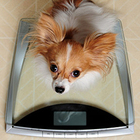- Home
- Pet Owners
- Dog Advice
- Understanding Dog Behaviour
- Exercise Essentials
Exercise Essentials
How much and how should I exercise my dog?
Adult dogs should be walked every day, if possible. The time, distance and pace of your walk will vary depending on breed, age, and environmental conditions. Puppies and senior dogs may prefer a more leisurely walk, or not to go at all if it’s too hot or too cold. Off-lead exercise options are also often the best for these dogs as they can go at their own pace and aren’t being forced to keep up with us. However, if your dog is young and wanting to run and jump with a little too much enthusiasm, or they are recovering from surgery, illness or injury, a walk on the lead can help reduce the likelihood of accidents and further injury. For those dogs that like the water, swimming is a great way to exercise your dog, and is an ideal way to exercise an overweight dog. It reduces the impact on joints and gets the heart rate pumping. For social dogs, play dates with other dogs or a visit to the dog park are great exercise options. Just make sure you are always watching your dog’s interactions with others to ensure they are actually enjoying the experience. Remember that many dogs that are taken to dog parks don’t actually have good social skills, and your dog may be overwhelmed by over-exuberant greeting or play from some dogs. If you aren’t sure if an interaction is friendly, call your dog away in a happy voice, and thrown some treats on the ground for the other dog(s) to occupy them while you get your dog to safety.  If you are time-poor, have mobility issues, or your pet is left alone for long periods, doggy daycare or a professional dog walker could be your answer. Be very careful in your selection of either, as not all centres or walkers have suitable skills to be doing the job. Ask questions about what they will do if your dog barks too much, or pulls on the lead. Avoid anyone who speaks in terms of pack leader or dominance - these people do not understand modern training and husbandry and are quite likely to punish your dog for what they perceive to be “bad” behaviour. If the conditions aren’t suitable for walking there are lots of indoor exercise options too. Tug-of-war, chasing a ball, hunting for treats hidden in/outside the house, or playing hide and seek are good options to get your dog’s heart rate up without having to leave home. These are also good options for dogs that are worried or anxious out on walks. A healthy dog is both physically and mentally fit. Check out our page on Environmental Enrichment for ideas on how to exercise your dog’s mind too! |

 Just like us, our pets are experiencing an obesity epidemic (click the following link to check out this article for more:
Just like us, our pets are experiencing an obesity epidemic (click the following link to check out this article for more: